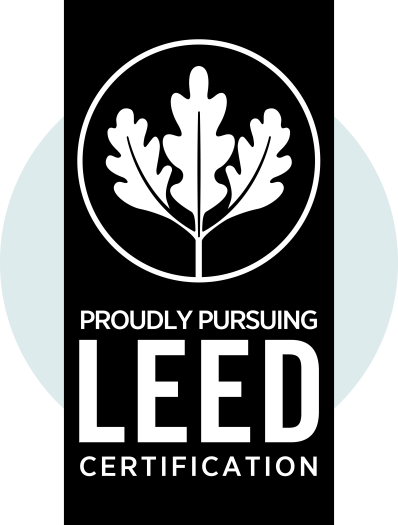The Millgrove visit on Saturday, December 13, from 3:30 to 4 pm is cancelled. We apologize for the inconvenience.
Printing is not working at Westdale Branch. We aim to fix it as soon as possible.
Study Halls will be paused from Friday, December 19, and resume on Monday, January 5, 2026.
www.hpl.ca/study-halls
Please note that the 905-546-3200 main line is experiencing technical issues today, Monday, December 8. Members can still reach Staff at 289-779-7588 or by email or through chat online. We are working quickly to resolve the issue. Thank you for your patience.
Bring back your borrowed library items (due Oct 1 or later) within 28 days to avoid a replacement or lost fee. We'll remove the fee when you bring back your overdue items.
The Valley Park Branch LEED (Leadership in Energy and Environmental Design) Scavenger Hunt

As of September 2023, the Valley Park Branch has earned a LEED Gold Certification.
LEED®, and its related logo, is licensed in Canada to the Canada Green Building Council and is used here with permission.
"This LEED Gold Certification signifies thoughtful environmental, social, technological and education integration and really sets the stage for future library spaces."- Paul Takala, Chief Librarian and CEO at Hamilton Public Library
Public spaces should set an example for increasing sustainable practices in our communities, buildings and lives. Valley Park does just that—read on to find out how.
What Are The Six Categories Of LEED (Leadership in Energy and Environmental Design)?
The six categories of LEED are Location and Transportation, Sustainable Sites, Water Use Reduction, Energy and Atmosphere, Materials and Resources and Indoor Environmental Quality.
Pursuing LEED certification involves using green building strategies across six categories. Based on the number of points achieved in each category, a project may be rated at one of four levels: Certified, Silver, Gold or Platinum. Valley Park is targeting LEED Gold Certification.
Why Is LEED Important?

Valley Park shows how a multi-faceted approach to sustainability results in a building that is better for the environment and for people.
At the construction stage, a majority of waste was diverted from landfills and instead was recycled into future products. The design increased ventilation rates, which allows for more fresh air to flow through the centre. Fresh air improves productivity and reduces risk of asthma. As well, the building has better air quality for occupants with lower concentrations of VOCs and CO2.
Sustainability measures throughout Valley Park mean that the facility uses less water, energy, and natural resources. Valley Park is more efficient to operate and costs less to maintain, saving money—and the planet—over the long term.
From planning, to construction, to daily operation, to the years ahead, every aspect of Valley Park has been thoughtfully considered to create the best building for the community and for our world.

Location and Transportation
How people get to the Valley Park Branch affects the building’s environmental impact. By using the community’s existing infrastructure and tying into existing building systems, the library encourages more sustainable transportation choices.
- The Valley Park Branch is easily accessible by public transportation as a bus stop is located beside the property.
- Bicycle lanes run along the adjacent street and bike racks are located close to the library entrance.
- No additional parking spots were added which minimizes heat island effect and encourages other modes of transportation.

Sustainable Sites
The outside area surrounding a building is as important as the inside. From storm water management to wildlife habitat, Valley Park’s landscaping is thoughtfully designed.
- The Valley Park Branch is set up with shady spots to sit and accessible walkways for visitors as well as plants, trees and flowers local wildlife love.
- While lighting outside the branch helps people see clearly, it’s also not too bright for wildlife who move around at night.

Water Use Reduction
Hamilton is fortunate to have access to adequate fresh, clean and safe water. However, water is precious. Managing water use helps prevent environmental and economic problems and ensures we have enough water for our needs.
- Low flow and low flush toilets in our branch reduce water use by 33 per cent.
- The plants around don’t need a lot of water either. They’re native and drought tolerant.

Energy and Atmosphere
Heat, light, power. All are necessary to run this branch every day. Solar panels on the roof generate clean energy for Valley Park and reduce the branch’s energy use by 60 per cent.
- All light bulbs in the branch are LED, which means they’re better at saving energy.
- Outside, light-coloured walkways and reflective roofing material mean less heat buildup, which is also great for the environment.

Materials and Resources
All products used to build the Valley Park Branch were chosen with care for the environment over the long term. Lumber was sourced from sustainable forests and the metal siding outside is made from recycled materials and can be recycled again.
- Forest Stewardship Council Certified.
- Products were evaluated based on life cycle analysis (the total impact of materials over the entire life of a building), recycled content, and reporting for toxic ingredients.
- The metal siding on the outside of the library is made from recycled materials—and it can be recycled again if it’s ever taken down.

Indoor Environmental Quality
Inhaling clean air is the goal everywhere we go—including your visit to the Valley Park Branch. The materials used to build this branch are free of harmful emissions, contaminants and irritants.
- All construction products were tested according to strict emissions protocol and selected to be low emitting of air contaminants/irritants. Air testing ensures that the indoor environment is of high quality for Staff and visitors.
- To assist with Staff well-being, full-time occupants are able to control their local indoor air temperature as well as lighting.
- A construction management plan protected workers from hazards and reduced pollutants from entering the building and duct work.
Think You’re A LEED Expert?
 LEED isn’t about just one part of a building. These six categories all work together to create the best building possible. For people. For Hamilton. For the planet. Want to put your LEED learning to the test? Take the quiz!
LEED isn’t about just one part of a building. These six categories all work together to create the best building possible. For people. For Hamilton. For the planet. Want to put your LEED learning to the test? Take the quiz!












